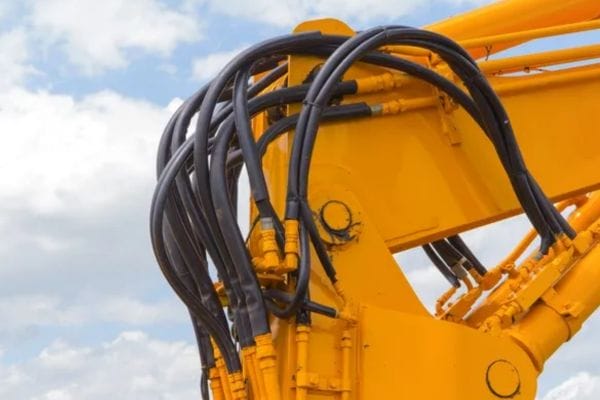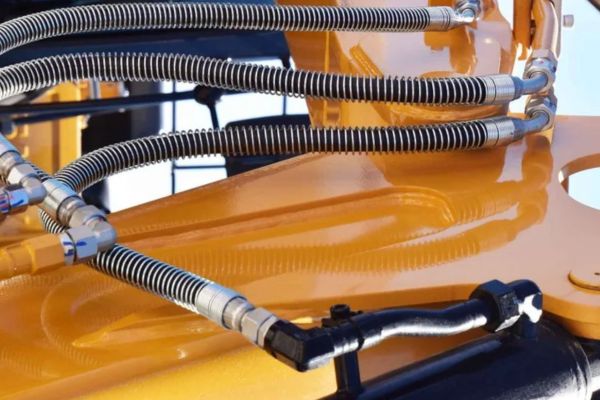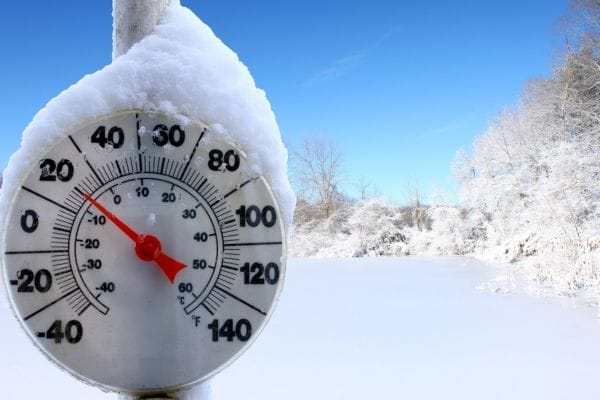Are your hydraulic hoses failing sooner than they should? A sudden hose burst can halt operations, damage expensive machinery, and create an extremely dangerous work environment for everyone nearby.
The essential safety rules for high-pressure hoses cover three areas: correct usage, careful transportation, and proper storage. Following these guidelines prevents premature wear, protects against catastrophic failure, and ensures a safer, more reliable hydraulic system.
How Can You Ensure Safe Hydraulic Hose Usage in Daily Operations?
Think that installing a hose is a simple task? Small, common mistakes during installation and daily use are the number one cause of premature hose failure and dangerous blowouts.
Safe daily usage means respecting the hose’s design limits. You must use the correct hose for the fluid, strictly adhere to pressure and temperature ratings, maintain the minimum bend radius, and avoid twisting or physical damage. Regular inspection is also a critical part of safe operation.

This is where safety on paper becomes safety in practice. The daily working environment of a hydraulic hose is incredibly harsh. It deals with pressure spikes, constant vibration, movement, and temperature changes. It’s easy for operators to forget these invisible forces.
Respecting the Hose’s fundamental Limits
The specifications printed on the side of a hose are not a suggestion; they are a hard limit.
- The Right Application: Every hose is made with a specific inner tube compound. A hose designed for standard hydraulic oil will quickly degrade if used to transfer aggressive chemicals, solvents, or even certain types of biodegradable fluids. The wrong fluid can cause the inner tube to swell, crack, or dissolve, leading to contamination and eventual failure. Always confirm fluid compatibility.
- Maximum Pressure and Temperature: Exceeding the maximum working pressure is like playing with fire. This pressure rating includes the system’s working pressure plus any anticipated surges or spikes. Similarly, operating outside the hose’s temperature range (-40℃ to +120℃ is common) is detrimental. High temperatures soften the rubber and reduce its pressure-holding ability, while extreme cold makes it brittle and prone to cracking.
Avoiding Physical Stress During Installation
The way a hose is routed and installed is just as important as its specifications.
- Bend Radius and Twisting: Every hose has a minimum bend radius. Bending it sharper than this limit crushes the reinforcement braids on the outside of the bend and stretches them on the inside, creating a critical weak point. This is especially true right behind the fitting. Twisting a hose, even by a few degrees, unwinds the reinforcement layers and puts them under constant stress. A hose under torsional stress will fail very quickly. Always align the fittings to ensure a natural, twist-free lay.
- Correct Length: A hose that is too short will be stretched taut during machine operation, putting immense strain on the fittings. A hose that is too long is likely to snag, rub against other components, or bend too sharply. Remember that hoses can change in length by up to 4% under pressure. A good installation allows for this slight change without stressing the assembly.
Maintaining Hose Integrity
A hose’s life depends on ongoing care.
- Careful Handling: Never drag an unprotected hose across concrete, gravel, or sharp metal edges. The outer cover is designed to resist abrasion, but it is not indestructible. Using protective sleeves or spring guards in high-abrasion areas is a smart investment.
- Cleanliness and Inspection: Contaminants are the enemy of hydraulic systems. A tiny particle of dirt can destroy a pump or valve. Always keep hoses capped when not in use and flush them before final installation. Furthermore, hoses have a shelf life and a service life. An aged hose can become brittle. If a hose has been in storage for a long time or is past its recommended service date, it must be pressure-tested and thoroughly inspected before being put into service.
What Are the Dangers of Improper Hydraulic Hose Transportation?
Is a hose just a tough piece of rubber in transit? Treating it carelessly during loading, shipping, and unloading can cause hidden damage that leads to unexpected, catastrophic failure later.
Improper transportation can introduce kinks, cuts, crushing damage, and contamination. Hoses must be handled gently, kept separate from sharp or corrosive materials, and supported properly to prevent structural damage before they are ever installed.

The journey from the manufacturer to the job site is a vulnerable time for a hydraulic hose. A hose that arrives damaged is already a liability. As a supplier, we take great care in how our products are packaged and handled because we know that unseen damage during shipping can undermine all the quality control we put into manufacturing. A forklift tine that grazes a hose coil or a heavy object dropped on a hose can create a weak point that won’t become apparent until it’s holding thousands of PSI.
Safe Loading and Handling Practices
The basic rule is to treat hoses with the same care you would any other mission-critical component.
- Gentle Movement: Hoses, especially in large coils, should be loaded and unloaded carefully. They should never be thrown or dropped from the truck bed. This can crack the inner tube or cause impact damage to the fittings if they are pre-installed. Always lay them down neatly and avoid sharp folds.
- Using Proper Equipment: Large-diameter hoses are incredibly heavy. A single coil can weigh hundreds of kilograms. Attempting to move it manually is a recipe for both personnel injury and hose damage. Use appropriate lifting equipment like forklifts (with padded forks), cranes with wide fabric slings, or specialized hose-handling equipment. Never, ever drag a large hose assembly by its end; this puts all the stress on the fitting connection.
Preventing Damage and Contamination in Transit
The cargo hold of a truck or shipping container can be a hazardous environment.
- Separate Your Cargo: A hydraulic hose’s outer cover is resistant to oil, but it is not designed to withstand prolonged contact with aggressive chemicals, solvents, or acids. These substances can be absorbed and break down the rubber. Even more dangerous are sharp-edged goods transported in the same load. A shifting metal plate or pallet corner can easily slice or puncture a hose during transit.
- Support Long Hoses: When a very long hose assembly must be transported, and it hangs off the end of a truck bed, the overhanging section must be properly supported. Allowing it to drag on the ground will completely destroy the hose cover and reinforcement layers in a very short distance. Brackets or supports should be used to keep it clear of the road surface.
- Temporary Outdoor Protection: If hoses must be temporarily placed outdoors during a transport leg, they must be protected from the elements. Lay them on a clean, flat surface—not in a pile of rocks or mud. Cover them with a waterproof tarp to shield them from direct sunlight (UV radiation degrades rubber), rain, and snow. And never stack other heavy items on top of them, as this can crush the hose and restrict its bore.
Why is Correct Hydraulic Hose Storage So Critical for Longevity?
Does storing a hose just mean keeping it out of the way? Improper storage silently degrades a hose, making it brittle, deformed, and unsafe before it ever sees a day of work.
Correct storage is critical because it protects the hose from environmental factors that accelerate aging. Controlled temperature, humidity, and protection from UV light and ozone prevent the rubber compounds from hardening, cracking, and losing their flexibility over time.

A hydraulic hose has a finite lifespan, even when it’s just sitting on a shelf. The rubber and polymer compounds used in its construction are subject to aging. Our job as a manufacturer and your job as a user is to slow down that aging process as much as possible. A warehouse is not just a place to put things; it’s a controlled environment designed to preserve the integrity of the product. A hose stored in a hot, sunny shipping container for a year will be in far worse condition than a three-year-old hose stored in a climate-controlled warehouse.
The Ideal Storage Environment
Creating the right environment is the first and most important step.
- Warehouse Conditions: The ideal storage space is a cool, dark, and dry warehouse. The temperature should be stable, ideally between -15℃ and +40℃. Humidity should be kept below 80%. Most importantly, the hose must be protected from direct sunlight and sources of UV light (like some fluorescent bulbs), as UV radiation is extremely damaging to rubber.
- Avoiding Damaging Substances: Ozone is another invisible enemy of rubber. It is generated by electric motors, furnaces, and welding equipment. Hoses should be stored away from these sources. Vapors from acids, solvents, and other chemicals can also be absorbed by the hose material, so ensure it is stored well away from any corrosive substances. A minimum distance of 1 meter from any heat source is also recommended.
Proper Physical Storage Methods
How a hose is physically placed on the shelf or rack matters immensely.
- Organized and Labeled: Different types and sizes of hoses should never be mixed. Keep them in separate bins or on different racks, and clearly label everything with the part number, size, and date of manufacture. This prevents confusion and makes it easy to find the right hose quickly.
- Relaxed and Unstressed: Hoses must be stored in a way that does not induce stress or create permanent kinks. Smaller hoses (under 76mm ID) can be coiled, but the coil diameter should be generous—at least 15 times the hose’s inner diameter. Storing it in a tighter coil can cause it to take a permanent set, making it difficult to install straight.
- Stacking Limits: Never stack coils of hose too high. A height limit of 1.5 meters is a good rule of thumb. The weight of the upper coils will crush and flatten the hoses at the bottom of the pile over time. To combat this, it’s good practice to rotate the stock every three months—moving the bottom coils to the top.
Managing Your Hose Inventory
Time is a factor you cannot ignore.
- First In, First Out: A strict “First In, First Out” (FIFO) inventory system is mandatory. The oldest hoses must always be used first. The generally accepted maximum storage shelf life for a rubber hydraulic hose is two years. After this period, its physical properties may have begun to degrade, even if it looks perfect on the outside. Using FIFO ensures that you are always installing the freshest, most reliable product.
Conclusion
By following these practical tips for usage, transportation, and storage, you can significantly extend the life of your hydraulic hoses, improve workplace safety, and prevent costly downtime.
At Topa, we are committed to providing not only the highest quality hydraulic hoses and fittings but also the knowledge you need to use them safely and effectively. We understand that a reliable component is one that is handled with care throughout its entire lifecycle.
If you are looking for a partner who can supply durable, high-performance hydraulic hoses and provide the expert support to back them up, contact the Topa team today. Let us help you build a safer and more efficient hydraulic system.
FAQ
What is the most common cause of hydraulic hose failure?
The most common cause is improper installation, such as exceeding the bend radius, twisting the hose, or using the wrong hose for the fluid or pressure rating.
How often should hydraulic hoses be inspected?
Hoses should be visually checked before each use and undergo detailed inspection at regular maintenance intervals. Look for cracks, leaks, abrasion, or signs of aging.
Can hydraulic hoses be stored outdoors?
Long-term outdoor storage is not recommended. UV light, moisture, and temperature extremes degrade rubber. If temporary outdoor storage is unavoidable, cover hoses with a waterproof tarp and keep them off rough or dirty surfaces.
Why is transportation a risk for hydraulic hoses?
Improper transport can cause hidden damage such as cuts, crushing, or kinks. Hoses should be handled with lifting equipment when heavy and kept separate from sharp or corrosive cargo.
What is the recommended shelf life for unused hydraulic hoses?
Typically, two years is the maximum recommended shelf life under proper storage conditions. After this period, hoses may lose flexibility and strength even if they look new.
How can I extend the service life of my hydraulic hoses?
Follow safe installation practices, use protective sleeves in high-wear areas, avoid over-bending or twisting, store them correctly, and always apply a “First In, First Out” inventory system.







